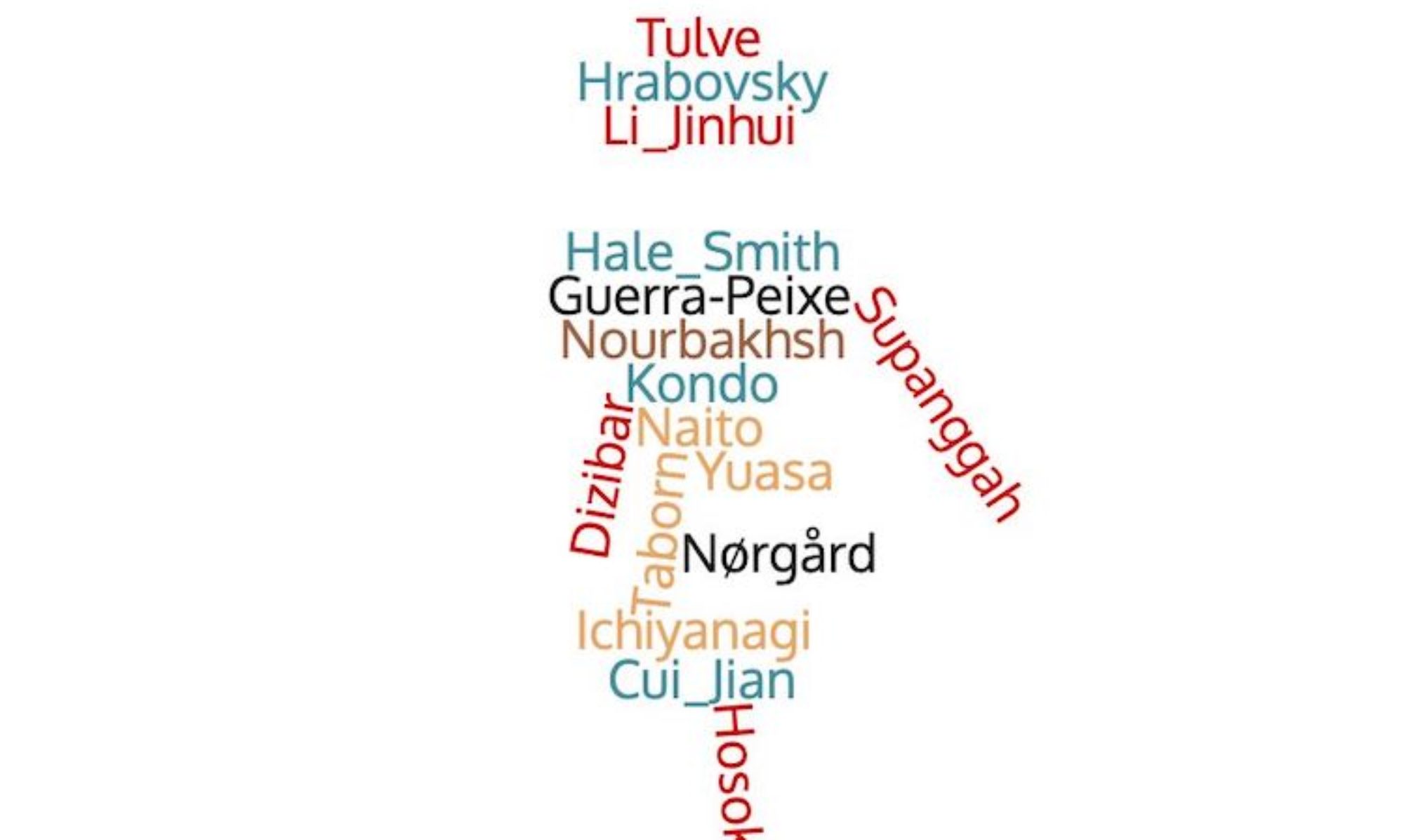By Gavin Lee
“Global musical modernisms” is a term I proposed to the US Society for Music Theory’s Global Interculturalism and Musical Peripheries interest group (formerly the Global New Music group), co-founded by Tomoko Deguchi and myself, who served as co-chairs from 2017-2020 (Deguchi remains a co-chair of the group). We are, of course, not the only people to have discussed modernisms in a global framework. For example, across the Atlantic Ocean, Björn Heile independently published his seminal 2019 article, “Musical Modernism, Global: Comparative Observations.”
Because the discourse from the study group has mostly been published online as introductory essays, readers may not be as familiar with them, but as is often the case, new inclusive concepts have been discussed by BIPOC people who you may wish to cite. This bibliography includes writings by BIPOC and other authors on conventionally modernist as well as popular music, from which you can glean that BIPOCs and our allies have been pushing against the boundaries of Western musical modernism. There are two main sources: Musicology Now’s 2018 “Global Perspectives” series (reprinted on this website in 2020), and Gavin Lee ed., Global Musical Modernisms website (2020 ff.). In 2019, the Global Interculturalism and Musical Peripheries interest group convened a seminar on global musical modernisms, which led to articles by Ya Hui Cheng (2021) and Tomoko Deguchi (2021) (see also, Jungmin Mina Lee 2018). Writings on underrepresented composers have been contributed by Amy Bauer, Frederico Barros, Anton Vishio, Ron Squibbs, Jay Arms, Paul David Flood, and Megan Lyons.
As defined in G. Lee ed., Global Musical Modernisms, the term refers to “all forms of music received and appropriated as ‘modern’ in any location around the globe, crossing the boundaries of post/tonality and musical genres. The focus is on art, avant-garde, experimental, modernist, and popular music, by global (African, Middle Eastern, Central/ South/ Southeast/ East Asian, Latin American, Australasian etc.) music-makers, minority music-makers from the West, and music-makers from the peripheries of Europe and North America.” Rather than attempting a “theory” of global musical modernisms, this definition serves to correct asymmetries in music studies (that fall under a broad definition) of “modernism,” which has tended to focus on a narrow concert repertoire from Western Europe and North America. With this decentering approach in mind (in contrast with an effort in theorizing global musical modernisms—not that the two are necessarily incompatible), it is important to remember that this is a descriptive rather than prescriptive definition based on submissions received, which have thus far included modernist and popular music and not other genres. In its earlier incarnation, the expansion of genres from modernism to popular music was articulated under the term “global new music” (G. Lee, 2018), before the Global Musical Modernisms website was launched. The website includes contributions on composers from the “peripheries of Europe and North America,” such as Helena Tulve and Per Nørgård (though the vast majority of submissions have been on BIPOC composers); this should give pause to dichotomous conceptions of “Western” and “global.” Forthcoming research on the website includes articles by Sophie Brady, Bjorn Heile, Lena Heng, Ralph Locke, and Eshantha Peiris. Other on-going related research include a book by Heile and a special journal issue co-edited by G. Lee and Chris Miller, in which I embark on a belated theorization of global musical modernisms, beyond the descriptive, decentering definition given above. Readers are of course free to produce publications examining the epistemic affordances of the specific formulation of “global musical modernisms”–what can this term offer to us that was not already found in pre-existing research?
More research on music that could fall under “global musical modernisms” (but mostly pre-date the term) can be found in the bibliography of the SMT Global Interculturalism and Musical Peripheries group.
Bibliography (writings from the study group and this website)
A) Lee, Gavin, ed. 2020-. Global Musical Modernisms.
Arms, Jay M. 2021. “Rahayu Supanggah’s “Paragraph” and the Problems of Intercultural Collaborations”
Barros, Frederico. 2021. “Guerra-Peixe’s Academic Trio.”
Cheng,Ya-Hui. 2021. “Whose Authorship? Authenticity in Chinese Popular Music under Global Modernism”
Deguchi, Tomoko. 2021. “The Appeal of the Foreign in Toshio Hosokawa’s Opera Matsukaze.”
Flood, Paul David. 2021. “Per Nørgård’s Two-Tone Infinity Series in “Wie Ein Kind” (1979-80).”
Lyons, Megan. 2021. “Hale to the King: “Three Brevities for Solo Flute” by Hale Smith.”
Squibbs, Ron. 2021. “Jōji Yuasa – Cosmos Haptic for piano (1957)”
B) Musicology Now’s “Global Perspectives” series. 2018.
Bauer, Amy. 2018. “Global Perspectives—The Music of Helena Tulve.”
Cheng,Ya-Hui. 2018. “Global Perspectives—Rock under the Red Flag: ‘A Piece of Red Cloth’ by Cui Jian”
Deguchi, Tomoko. 2018. “Global Perspectives—Significance of the Parts in Music of Tōru Takemitsu.”
Lee, Gavin. 2018. “Global Perspectives—Global New Music: From Avant-Garde to Rock, Korea to Estonia.”
Jung-Min Mina Lee. 2018. “Global Perspectives—The Story of Unsuk Chin’s Cello Concerto.”
Vishio, Anton. 2018. “Global Perspectives—The Art of Derivation: Jo Kondo’s Paregmenon.” https://musicologynow.org/global-perspectives-the-art-of-derivation-jo-kondos-paregmenon/
